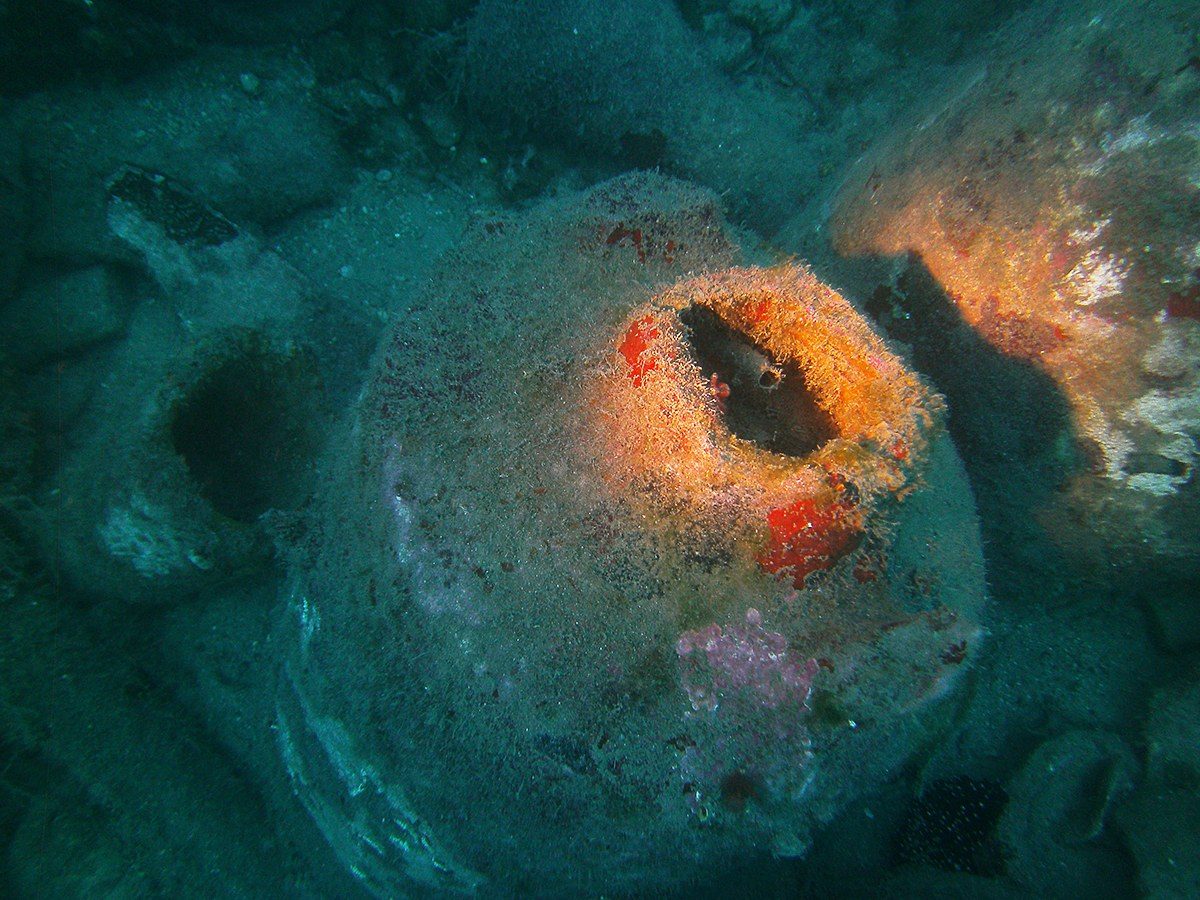The discovery of the Roman ship of Albenga is due to the local fisherman Antonio Bignone that in 1925 recovered in its three networks Roman amphorae.
The position of the recovery was indicated approximately 1 mile from the coast and about 40 feet deep.
The first intervention of excavation and recovery of the wreck dating back to 1950 and was executed by the firm SORIMA, fresh from gold recovery on the wreck Egypt case of edge.
Were recovered about 1,000 amphoras, mostly broken at the top, probably damaged by trawling, or affected by the bucket recovery Claw.
In fact the first recovery attempt was criticized; in the light of the results obtained it was in fact the first realization of the meaning that underwater archeology was to buy in the interpretation of the many problems, not only relative to the knowledge of the ancient materials but also to the knowledge of the art of shipbuilding , the shipping lanes and trade antiquity.
After recovery of the ships of Nemi, the work carried out on the ship Roman Albenga represented the first real attempt at excavation of a shipwreck in Italy.
Only in 1957, with the creation of the Experimental Centre of Submarine Archaeology Albenga, we began the first survey of the wreck.
In 1961 he addressed the official takeover of the ship by adopting the system of relief paintings in rigid tubes forming a network covering the wreck, a mesh of 150 × 150 cm, which through a system of photographic enlargement in scale of all square (192 to be exact) and their montage gave the actual measurements of the pile of amphorae emerging from the bottom: 26 meters long and 7.5 wide.
The excavation also allowed to identify the mast which had a diameter of about 50 cm.
Following the results of the excavation made sure that the ship Roman d’Albenga was about 50 m long. Broadband least 10 M.T. and amphorae transported had to be at least 10,000.
Account is taken into account that the amphorae weigh 21.5 kg empty, that their content was 26 liters per amphora weighed approximately 45 kg. – Then the ship had a capacity of 450 tons.
Even today, this ship is one of the biggest wrecks of cargo ships Roman known today in the Mediterranean.
Among the materials of the load were recovered 8 bronze helmets, which could indicate the presence of an armed guard on board.
It is now famous the “wheel of maneuver” in lead found by divers Claw, still equivocal and the horn lead which according Lamboglia as part of the head of an animal that was to decorate the bow of this magnificent ship .








